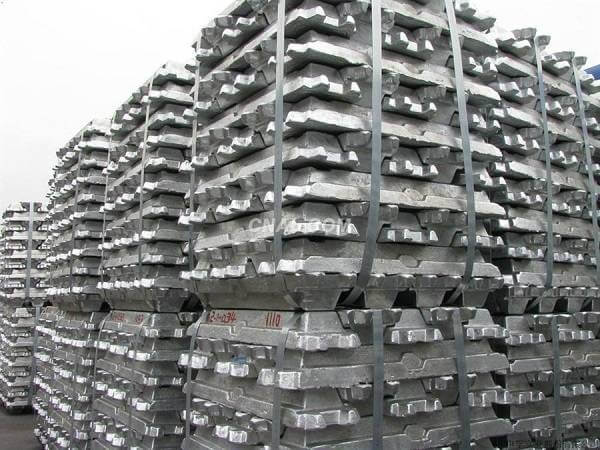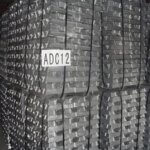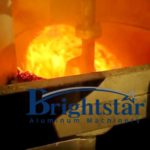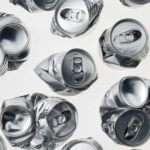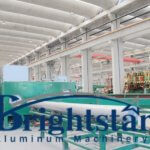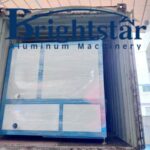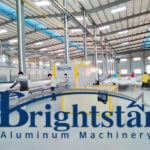What is the difference between environmental ADC12 aluminium ingot and standard ADC12 aluminum ingot?
What is the difference between environmental ADC12 aluminium ingot and standard ADC12 aluminum ingot?
What is the difference between environmental ADC12 aluminium ingot and standard ADC12 aluminium billet? What standards are used? What difference is it in the price?
In fact, ADC12 die-casting aluminum ingots are not much different.
Due to the current domestic recycled aluminum alloy ingot industry, the manufacturing process is quite different, and the quality is also of varying quality.
But there is still a difference
The first is the production process:
High quality and environmental ADC12 aluminum ingot
The alloy composition, mechanical properties and pinhole degree can meet the requirements of the Japanese standard;
The manufacturing process is generally a group furnace, and the slag and gas removal is quite well, the appearance of the aluminum ingot is also relatively beautiful;
Aluminium dross during application is very few, but the price is 40-80.00USD per ton higher than the ordinary ADC12.
It is more suitable to use this material such as the car engine casing and the exported casting parts.
Standard ADC12 aluminum ingot
The alloy composition can basically meet the requirements of the national standard.
Some are made of group furnaces, and some are made of a single furnace.
They do not guarantee mechanical properties, and the pinhole degree is also different for each production.
There may be a little more aluminum slag, but the whole does not affect the application.
Because of the low cost, many die-casting plants now use this aluminum alloy ingot. Basically, it can also meet the export requirements.
The quality is not so stable, and the composition exceeds the standard a little bit.
Second, the alloy composition is required to be more environmentally friendly:
Mainly the requirements for lead content
The content of the chemical element Pb (lead) is different, the requirement of environmental ADC12 aluminum ingot is less than 0.05, that is to say: the standard ADC12 aluminum ingot requirement is not higher than 1000ppm, and the environmental ADC12 aluminum alloy ingot is not more than 500ppm.
Knowledge point of aluminum industry: ppm (parts per million) unit is the representation of the ratio, which means “parts per million”, such as 1ppm is one millionth, 150ppm is one hundred and fifty millionths, and so on.
That is to say when formulating 1ppm concentration, 1 gram of solute (referring to pure quantity) is added with 1 ton (999999 grams) of water, and so on.
If ppm is converted to percent sign “%”: 1ppm=0.0001%. However, in most scientific journals, ppm is no longer used, but the thousand sign “‰” is used instead. The conversion of ppm into ‰ is: 1ppm=0.001‰.
Die-casting aluminum ingots on the market can be roughly divided into the following four types:
1. The standard die-casting aluminum alloy ingots commonly used in the market have the Japanese standard ADC12 (the corresponding Chinese grade is YL113);
according to different customers’ request, ADC12 can be divided into standard type, environmental type, high copper type, low copper type, etc. (The detailed composition are introduced in the table below)
ZL102, YL102 domestically produced (the corresponding national grade is AlSi12 or A413).
2.YZ102 aluminum ingot. (die-casting 102 aluminum ingot); YZ104 aluminum ingot. (die-casting 104 aluminum ingot);
This model is produced by a few factories, and there is no national standard to check.
Its raw materials are different from ordinary non-standard materials.
The specific gravity of this aluminum ingot is very light, 5%~9% lighter than that of non-standard aluminum ingots.
The composition of YZ102 is generally as follows: silicon: 11.0, copper: below 0.3, iron: below 0.6, zinc: below 0.6, magnesium: below 0.5, lead: below 0.1.
This material has a lighter specific gravity than YL102, and can completely replace YL102 in performance. (YZ104 can also replace YL104 use).
3. High-grade die-casting aluminum alloy ingot
Such as ADC10, A380.1, and ZL104 (corresponding to American grade A360).
4. Non-standard aluminum ingots, non-standard 102, non-standard ADC12, negative No. 7 aluminum ingots, etc.
In fact, they can all be classified as non-standard die-casting aluminum ingots, Non-standard means that it does not meet the requirements of national standards.
In the market, non-standard aluminum ingots are divided into the ingot produced from the large furnace and small furnaces.
A large furnace means the furnace more than 8T; a small furnace is generally a furnace below 2T or a crucible furnace;
Of course, the quality of large furnaces is usually more stable and the supply is sufficient.
With the advancement of the national environmental protection policy, aluminum ingots produced from the small furnace will definitely withdraw from the stage of history.
Second, the composition of non-standard aluminum ingots is as follows. (Generally, non-standard die-casting aluminum ingots and zinc will exceed the standard between 2-3), for example, Japanese standard ADC12Z (zinc below 3.0) silicon is slightly lower, and other elements are close to ADC12.
No. Grade classification Main element composition reference (%) Note
1 ADC12 Standard
Silicon: 9.6-12, Copper: 1.6, Iron: 0.9, Zinc: 1.0, Magnesium: 0.2, Lead: 0.15 for reference
2 ADC12 Environmental
Silicon: 9.6-12, Copper: 1.6, Iron: 0.9, Zinc: 1.0, Magnesium: 0.2, Lead: 0.03 High requirements, food grade
3 ADC12 high copper
Silicon: 9.6-12, copper: 2.3, iron: 0.9, zinc: 1.0, magnesium: 0.2, lead: 0.15 copper content> 2.0
4 ADC12 low copper
Silicon: 9.6-12, copper: 1.3, iron: 0.9, zinc: 1.0, magnesium: 0.2, lead: about 0.15 – copper content <1.3
5 YZ102 aluminum ingot (A413.1; AlSi12)
Silicon: 11.0, Copper: 0.3, Iron: 0.6, Zinc: 0.6, Magnesium: 0.5, Lead: 0.03
(In replace of YL102) the density is 5% lighter than ADC12
6.YZ104 Aluminum Ingot
Silicon: 9.5, Copper: 0.3, Iron: 0.6, Zinc: 0.6, Magnesium: 0.5, Lead: 0.03
(In replace of YL104)
Brightstar Aluminum Machinery has been an aluminum dross recovery and aluminum extrusion solution provider for over 18 years in manufacturing aluminum dross machine, aluminum scrap melting furnaces, aluminum extrusion line and auxiliary equipment.
We focus exclusively on producing hot aluminium dross processing machine, aluminium chips melting furnace, molten aluminium electromagnet iron remover, aluminium profile polishing machine and aluminum extrusion packaging machine for aluminium alloys, aluminium scrap recycling and aluminium extrusion factories.
Contact us now for your aluminum machine request, turnkey project and package deal!

